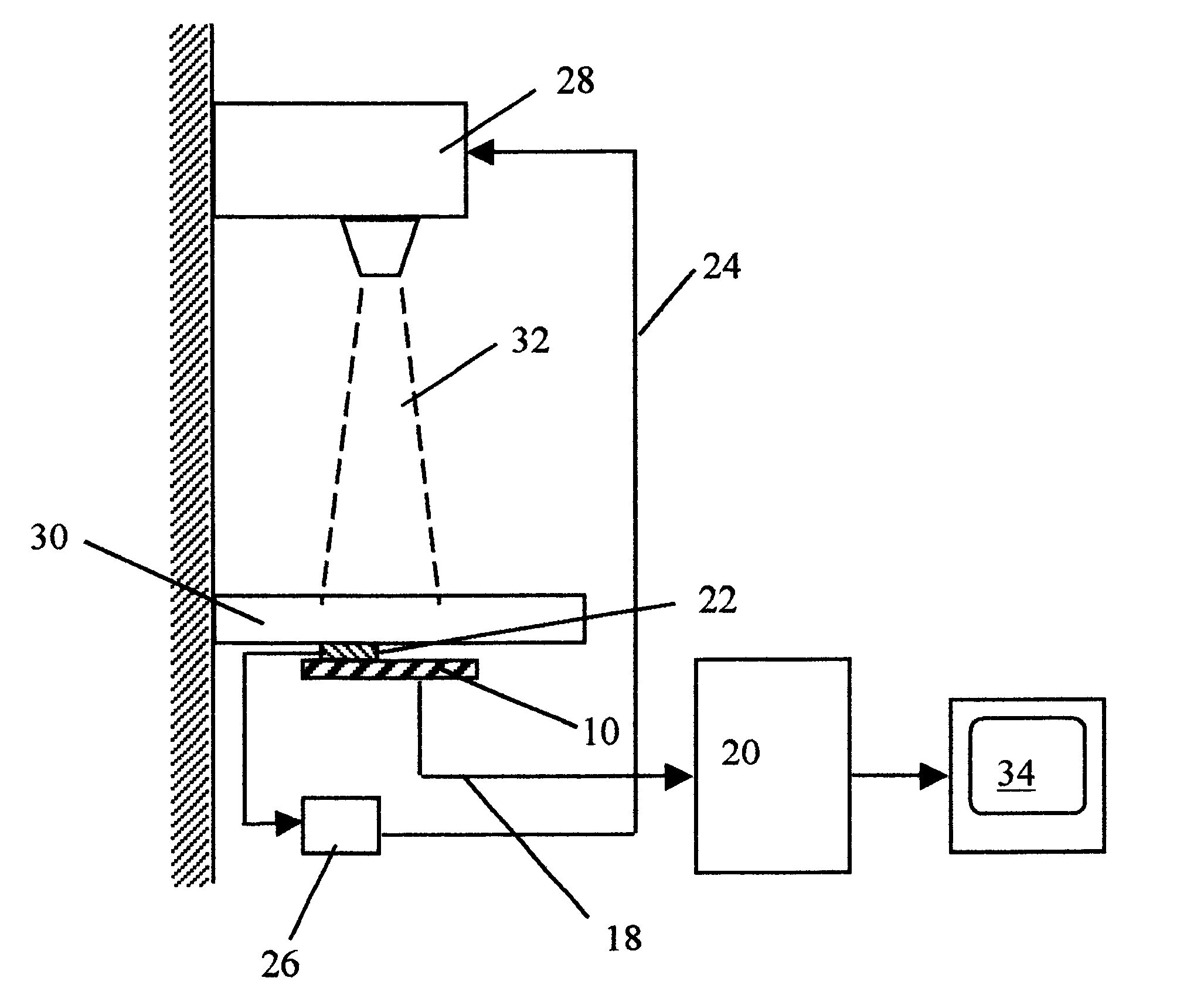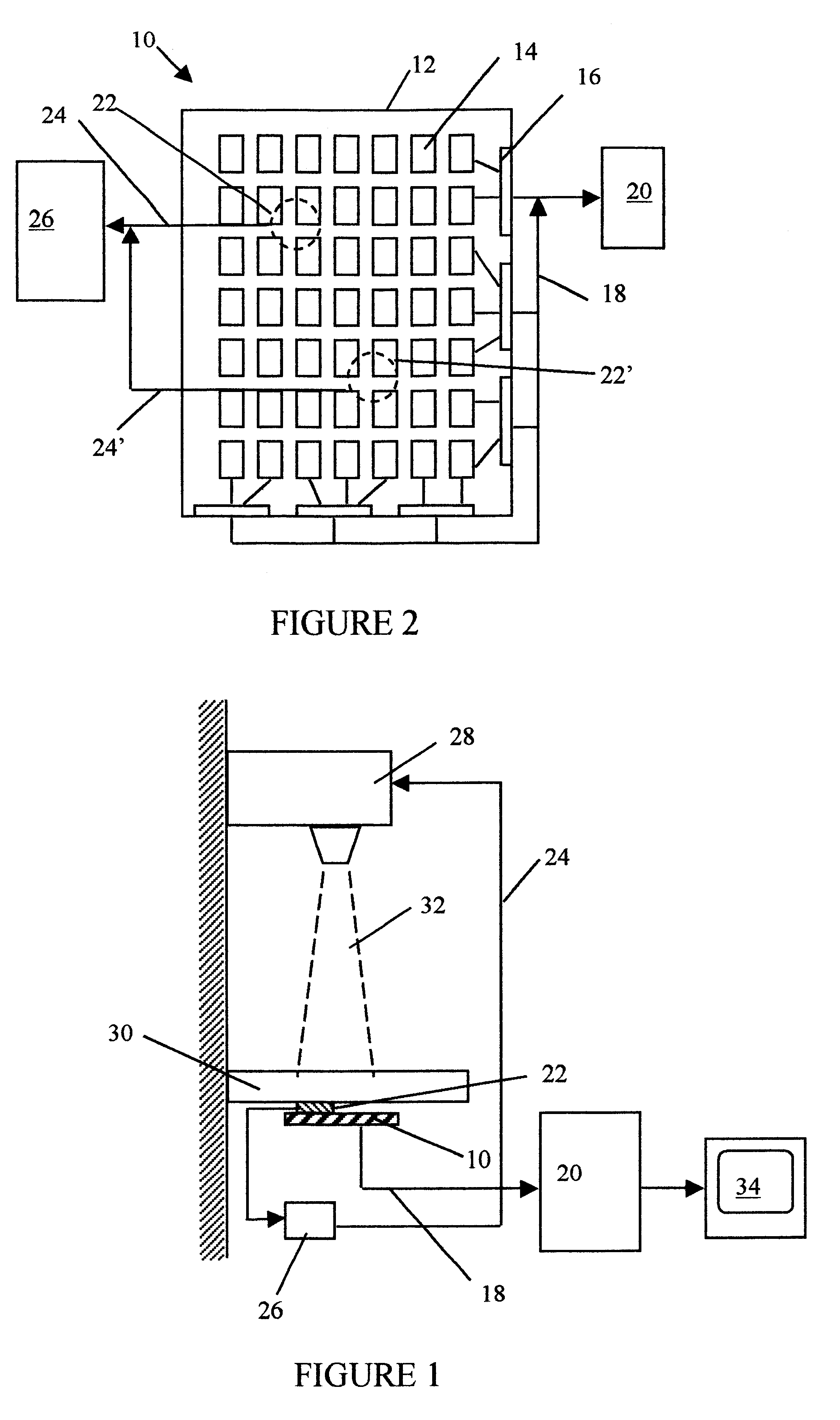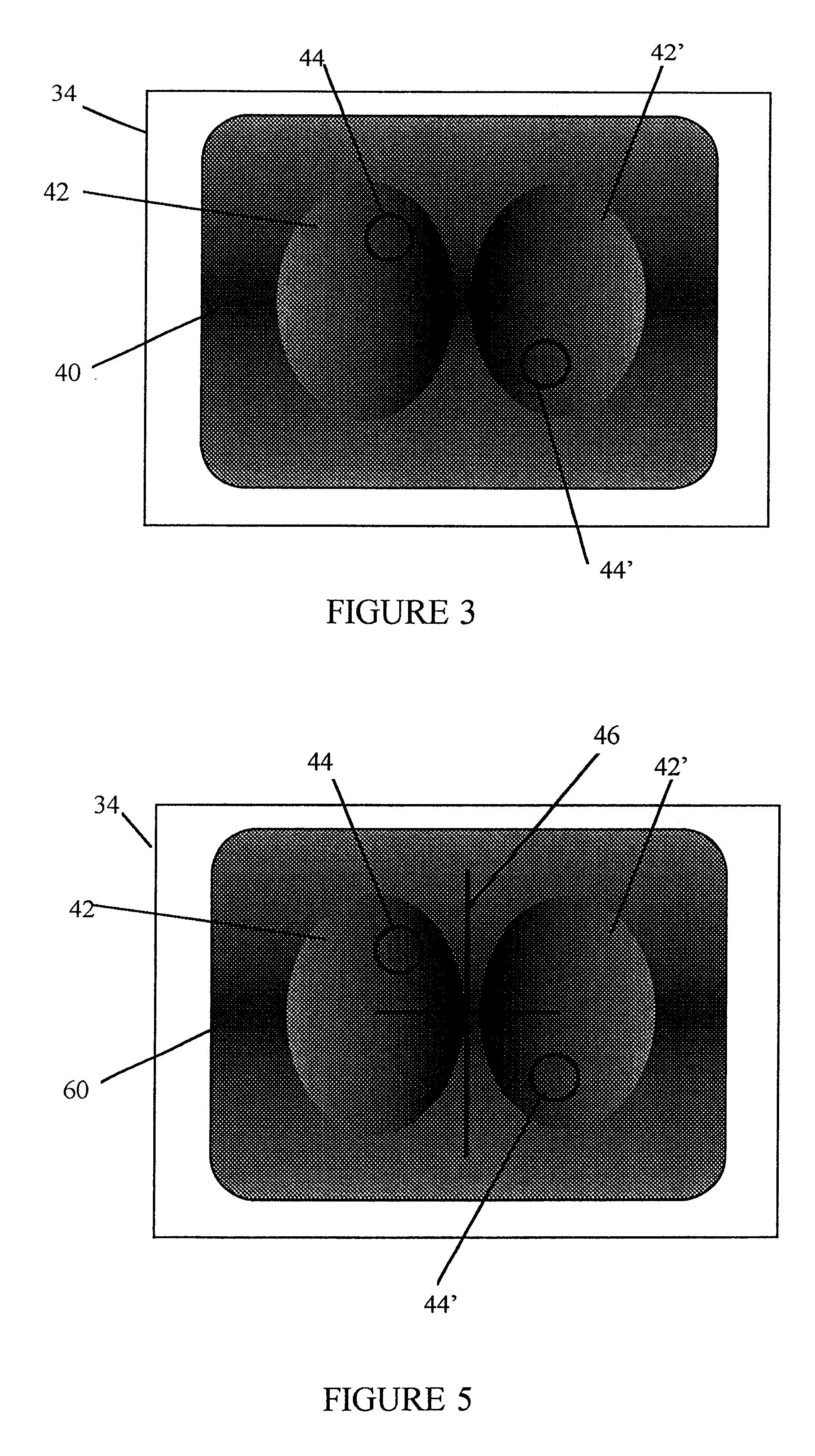Radiogram showing location of automatic exposure control sensor
a technology of automatic exposure control and radiograph, which is applied in the field of electronic radiography, can solve the problems of excessive quantum noise (mottle) in the image, unnecessarily high radiation dose to the patient, and possible saturation of the detector,
- Summary
- Abstract
- Description
- Claims
- Application Information
AI Technical Summary
Problems solved by technology
Method used
Image
Examples
Embodiment Construction
)
Throughout the following detailed description, similar reference characters refer to similar elements in all figures of the drawings.
Referring now to FIG. 1, there is shown a typical radiographic installation for obtaining an electronic radiogram of a patient. The system typically includes a radiation source and a patient support table 30. The radiation source 28 emits on command x-rays as an x-ray radiation beam 32 directed toward a predetermined area of the table 30. Beneath the table 30 in the area where the radiation beam 32 is directed, there is an imaging panel 10. The imaging panel comprises a plurality of individual radiation detectors each corresponding to one picture element, typically arrayed in a two dimensional array. The array of sensors forms an image sensitive area over which a subject to be examined is placed.
The imaging panel 10 usually includes along at least one edge thereof a plurality of electronic components for addressing each individual sensor in the panel,...
PUM
 Login to View More
Login to View More Abstract
Description
Claims
Application Information
 Login to View More
Login to View More - R&D
- Intellectual Property
- Life Sciences
- Materials
- Tech Scout
- Unparalleled Data Quality
- Higher Quality Content
- 60% Fewer Hallucinations
Browse by: Latest US Patents, China's latest patents, Technical Efficacy Thesaurus, Application Domain, Technology Topic, Popular Technical Reports.
© 2025 PatSnap. All rights reserved.Legal|Privacy policy|Modern Slavery Act Transparency Statement|Sitemap|About US| Contact US: help@patsnap.com



